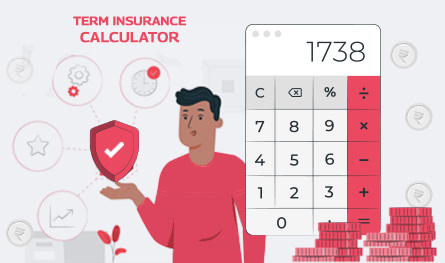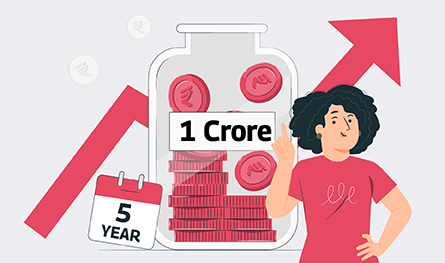Types of Health Insurance Claim Settlement Ratio
There are two types of health insurance claim ratio. One is the claim settlement ratio and the other is the incurred claims ratio. Let’s understand what these ratios mean in the context of health insurance claims:
Claims Settlement Ratio
Claims settlement ratio measures the number of claims settled by the insurance company in a financial year against all the claims made on it. The formula for calculating the ratio is as follows:
Claims settlement ratio = (number of claims settled / total number of claims made) * 100
Incurred Claims ratio
Incurred claims ratio measures the amount of claims settled by the insurance company in a financial year against the total amount of premiums received in the same year. The formula for measuring incurred claims ratio is as follows:
Incurred claims ratio = (total amount of claims paid / total amount of premiums received) * 100
Interpretation of Health Insurance Claim Ratio
For the claim settlement ratio, the higher the ratio the better trust you can have on the insurance company in settling your claim. A higher ratio denotes that the insurance company settles its claims duly and thus increases the chances of the settlement of your health insurance claim. So, the higher the ratio, the better is the insurer.
For incurred claims ratio, a higher ratio is not necessarily the best choice. If the incurred claims ratio of the insurance company is more than 100, it means that the company is making a loss. It is paying more in claims than it is earning in premiums. This might be unfavourable for you as a loss making insurer would have a low solvency margin and might increase the premium rates to compensate for the loss. Similarly, companies with an incurred claims ratio lower than 100 are making a profit. They are earning more from premium collections than they are paying claims. Such companies might be interpreted to be charging very high premium rates. If the incurred claim ratio is below 50%, it is a red flag. Such companies are interpreted to incur huge profits whereas claims are minimal. This means that the companies are not charging reasonable amounts of premiums and that their premiums are inflated. Thus, interpreting incurred claims ratio is a bit relative in nature. Ideally, an incurred claims ratio of 60% to 85% is a safe bet.
Claim Settlement Ratio of Popular Insurance Companies in India
You might not be able to calculate the claim ratios of health insurance companies yourself because of the lack of data. As such, in the context of health insurance, the Insurance Regulatory and Development Authority (IRDA), calculates and publishes the claim settlement ratios of different health insurance companies. These ratios are published after each financial year. For the financial year 2016-17, here are the incurred claims ratios of different insurers:
| Name of the insurance company |
|
|
| National Insurance Company Limited |
|
|
| The New India Assurance Company Limited |
|
|
| The Oriental Insurance Company Limited |
|
|
| United India Insurance Company Limited |
|
|
| Bajaj Allianz General Insurance Company Limited |
|
|
| Bharti AXA General Insurance Company Limited |
|
|
| Cholamandalam MS General Insurance Company Limited |
|
|
| Future Generali India Insurance Company Limited |
|
|
| HDFC Ergo General Insurance Company Limited |
|
|
| ICICI Lombard General Insurance Company Limited |
|
|
| IFFCO-Tokio General Insurance Company Limited |
|
|
| Kotak Mahindra General Insurance Company Limited |
|
|
| Liberty Videocon General Insurance Company Limited |
|
|
| L & T General Insurance Company Limited |
|
|
| Magma HDI General Insurance Company Limited |
|
|
| RahejaQBE General Insurance Company Limited |
|
|
| Reliance General Insurance Company Limited |
|
|
| Royal Sundaram General Insurance Company Limited |
|
|
| SBI General Insurance Company Limited |
|
|
|
| Shriram General Insurance Company Limited |
|
|
| TATA AIG General Insurance Company Limited |
|
|
| Universal Sompo General Insurance Company Limited |
|
|
| Apollo Munich Health Insurance Company Limited |
|
|
| Cigna TTK Health Insurance Company Limited |
|
|
| Aditya Birla Health Insurance Company Limited |
|
|
| Max Bupa Health Insurance Company Limited |
|
|
| Religare Health Insurance Company Limited |
|
|
| Star Health & Allied Insurance Company Limited |
|
|
The claim settlement ratio of health insurance companies is not published by the Insurance Regulatory and Development Authority (IRDA). It is, usually, calculated and published by the insurer itself. You can find the claim settlement ratios on the insurance company’s website and also on the websites of reputed online insurance brokers who deal with multiple insurance companies.
Limitations of Claim Ratios
Both claim settlement ratio and incurred claims ratio have a limitation. The time taken by the insurer is not reflected under any of these ratios. If the claim settlement ratio is high but the company takes a lot of time in settling its claims, it is not good for you. You need an insurer whose claim settlement is quick and hassle-free. Similarly, for newly formed insurance companies, the incurred claim ratio might be in the extreme. It might either be higher than 100% or below 50%. The reason for the former is that the company has earned limited premiums during its initial years whereas the incidence of claims is higher. For the latter case, the company might not have incurred substantial claims in the initial years whereas premium collections can be quite good.
So, though the health insurance claim ratios are important parameters, you should not judge an insurance company or its health insurance plans solely on these ratios. Other parameters should also be taken into consideration like the company’s network of hospitals, the plan’s coverage features, premiums charged, etc. Only after considering every parameter should you buy the best health insurance plan.
 Jan 08, 2025
Jan 08, 2025
 Health Insurance
Health Insurance
.png)
.png)


.png)








